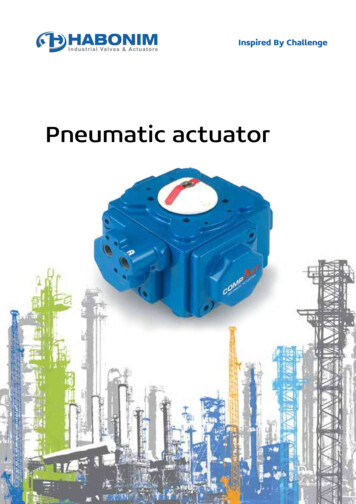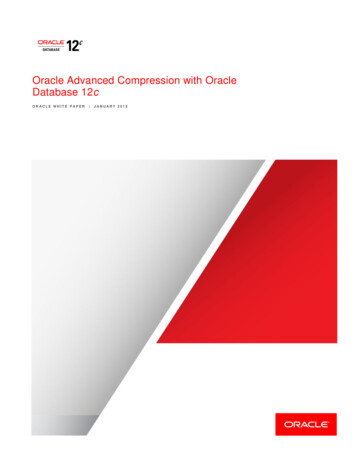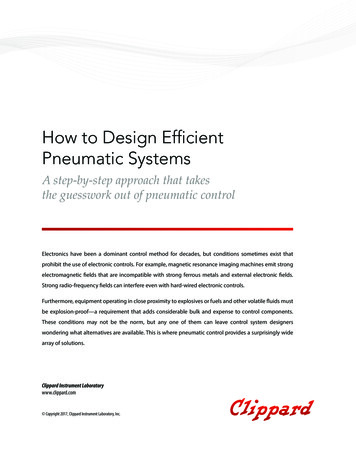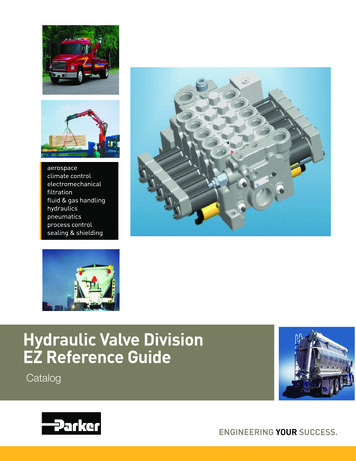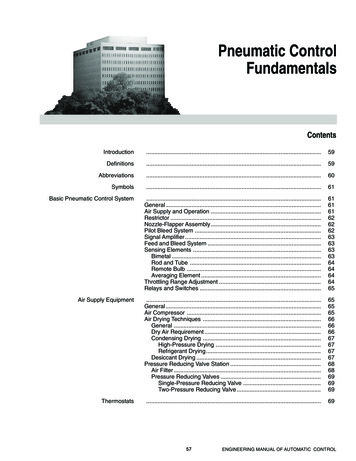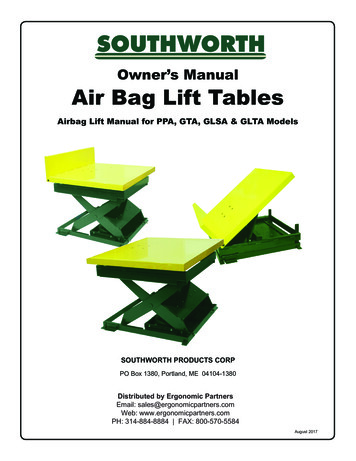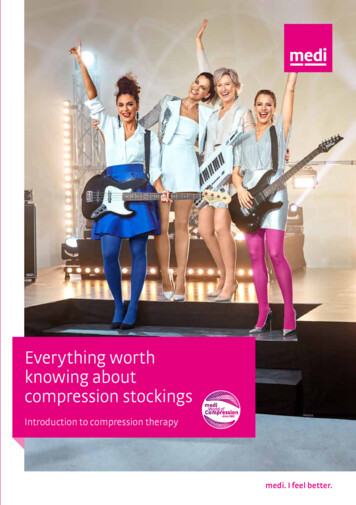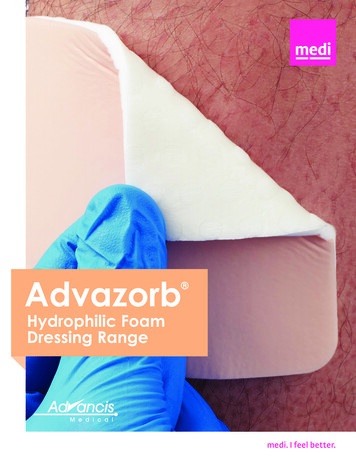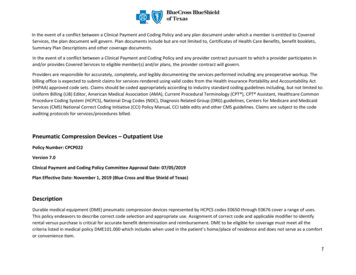
Transcription
In the event of a conflict between a Clinical Payment and Coding Policy and any plan document under which a member is entitled to CoveredServices, the plan document will govern. Plan documents include but are not limited to, Certificates of Health Care Benefits, benefit booklets,Summary Plan Descriptions and other coverage documents.In the event of a conflict between a Clinical Payment and Coding Policy and any provider contract pursuant to which a provider participates inand/or provides Covered Services to eligible member(s) and/or plans, the provider contract will govern.Providers are responsible for accurately, completely, and legibly documenting the services performed including any preoperative workup. Thebilling office is expected to submit claims for services rendered using valid codes from the Health Insurance Portability and Accountability Act(HIPAA) approved code sets. Claims should be coded appropriately according to industry standard coding guidelines including, but not limited to:Uniform Billing (UB) Editor, American Medical Association (AMA), Current Procedural Terminology (CPT ), CPT Assistant, Healthcare CommonProcedure Coding System (HCPCS), National Drug Codes (NDC), Diagnosis Related Group (DRG) guidelines, Centers for Medicare and MedicaidServices (CMS) National Correct Coding Initiative (CCI) Policy Manual, CCI table edits and other CMS guidelines. Claims are subject to the codeauditing protocols for services/procedures billed.Pneumatic Compression Devices – Outpatient UsePolicy Number: CPCP022Version 7.0Clinical Payment and Coding Policy Committee Approval Date: 07/05/2019Plan Effective Date: November 1, 2019 (Blue Cross and Blue Shield of Texas)DescriptionDurable medical equipment (DME) pneumatic compression devices represented by HCPCS codes E0650 through E0676 cover a range of uses.This policy endeavors to describe correct code selection and appropriate use. Assignment of correct code and applicable modifier to identifyrental versus purchase is critical for accurate benefit determination and reimbursement. DME to be eligible for coverage must meet all thecriteria listed in medical policy DME101.000 which includes when used in the patient’s home/place of residence and does not serve as a comfortor convenience item.1
Coverage decisions are subject to all terms and conditions of the applicable benefit plan, including specific exclusions and limitations and toapplicable state and/or federal law. Policies contained in this document do not constitute plan authorization nor are they an explanation ofbenefits. Contact Provider Customer Service for specific coverage or policy information.Term Descriptions:Pneumatic compression device consists of an inflatable garment for the arm, leg, trunk or chest and an electrical pneumatic pump that fills thegarment with compressed air. The garment is intermittently inflated and deflated with cycle times and pressures that vary between devices.Non-segmented pneumatic compressor is a device which has a single outflow port on the compressor. The air from the single tube may betransmitted to a sleeve/appliance with multiple compartments or segments.Segmented compressor is a device which has multiple outflow ports on the compressor which lead to a distinct segment on the appliance whichinflates sequentially.Segmented device without calibrated gradient pressure is a device in which either (a) the same pressure is present in each segment or (b) thereis a predetermined pressure gradient in successive segments but no ability to individually set or adjust pressures in each of several segments.Pressure is set by a single control on the distal segment.Segmented device with calibrated gradient pressure is characterized by a manual control on at least three outflow ports which can deliver anindividually determined pressure to each segment unit.Segmental gradient pressure pneumatic appliances are appliances/sleeves which are used with a non-segmental pneumatic compressor, butwhich achieve a pressure gradient through the design of the tubing and/or air chambers.Venous thromboembolism (VTE) is deep vein thrombosis (DVT) - formation of a blood clot in a deep vein and pulmonary embolism (PE) - ablockage of an artery in the lungs by a substance that has moved from elsewhere in the body through the blood stream. It is a complicationassociated with major surgeries resulting in significant morbidity and mortality.Lymphedema is the swelling of subcutaneous tissues due to the accumulation of excessive lymph fluid. The abnormal accumulation of lymph inthe interstitial tissues is usually the result of impairment of the normal clearance by the lymphatic system caused by therapy or disease.Chronic venous stasis ulcer wounds thought to occur due to improper functioning of venous valves, usually of the legs. Synonyms: venousinsufficiency ulcer, stasis ulcer, stasis dermatitis, varicose ulcer.2
Evaluating risk factors for DVT prophylaxisHigh-risk factors for bleeding identified by medical policy MED202.060: Previous major bleeding (and previous bleeding risk similar to current risk)History of heparin-induced thrombocytopenia (HIT)Severe renal failure, (Glomerular Filtration Rate - GFR 30 percent)Concomitant antiplatelet agentSurgical factors: a history of or difficult-to-control surgical bleeding during the current operative procedure, extensivesurgical dissection and revision surgeryModerate and High-risk factors for VTE as identified by medical policy MED202.060: Prior DVT/Pulmonary Embolism (PE) or family history of genetic thrombocytopeniaAge 60 years or patients 40 to 60 years with additional risk factorsSepsis or systemic infectionPresence of an inherited or acquired hypercoagulable state; Antithrombin III deficiency Protein C or S deficiency Activated Protein C resistance (Factor V Leiden) Antiphospholipid syndrome Prothrombin20210 defect DysfibrinolysisActive cancer or cancer treatmentKidney failureRecent myocardial infarction (MI)Nonhemorrhagic stroke within the past six monthsCongestive heart failure (CHF) (decompensated)Low ejection fraction (EF) 40 percentSevere obesity (Body Mass Index 35)Spinal cord injuryMultiple limb fracturesLower extremity or pelvic fracture3
Moderate and High-risk factors for VTE as identified by medical policy MED202.060 (cont.): Lower extremity or pelvic fracture Use of clotting medications or transfusionsHCPCS codes for pneumatic compression devicesNon-segmental pneumatic compression pumps – E0655, E0660, E0665 and E0666Segmental pneumatic compression pumps – E0656, E0667, E0668, E0669 and E0670Segmental gradient pressure pneumatic appliance – E0671, E0672 and E0673High pressure, rapid inflation/deflation pneumatic compression device – E0675 (arterial insufficiency only)Intermittent limb compression device, includes all accessories – E0676For lymphedema and chronic venous insufficiency use: E0650 – E0673For arterial insufficiency use: E0675For deep vein thrombosis prophylaxis use: E0676Documentation Information:To establish the medical necessity of pneumatic compression devices the following must be submitted with the claim or upon request: Documentation of appropriate physician oversight including the evaluation of the patient’s condition to determine medicalnecessity of the device,Suitable instruction in the operation of the machine,Treatment plan defining the pressure to be used, frequency and duration of use and ongoing monitoring of use and response to thetreatment.Physician evaluation documentation must include: Diagnosis and prognosis,Symptoms and objective findings, including measurements which establish the severity of the condition,The reason the device is required, including treatments which have been tried and failed.Record review for DME will include appropriate orders from the treating provider, and if the equipment is to be used post operatively, thesurgical facility discharge instructions/summary will reflect orders and instructions for use.4
Reimbursement Information:Coverage of DME items is for a home/place of residence use only. DME items utilized in a facility setting (hospital, outpatient surgery,physician office) are not separately billable and are considered a part of the facility/office charge.ClaimsXtenTM Edits - When codes E0655 through E0673 are billed for compression device accessories along with code E0676, the all-inclusivecode for compression devices, the accessories will be denied as inclusive to the device and therefore ineligible for separate payment.Coverage of DVT prophylaxis compression devices (E0676) requires the patient to have a contraindication to pharmacological agents (i.e., ahigh risk for bleeding) and meet criteria in medical policy MED202.060 Major orthopedic surgery (total hip arthroplasty, total knee arthroplasty or hip fracture surgery, orMajor non-orthopedic surgery (general gynecological, urologic, thoracic or neuromuscular procedures AND are at moderate or highrisk of VTE, orNonmajor orthopedic surgery AND are at moderate or high risk of VTE.Coverage for chronic venous stasis ulcers Caused by venous insufficiency which failed to heal after six-month trial of conservative physician-directed medical therapy (mustinclude use of a compression bandage system or garment, exercise and elevation of the limb)Coverage for lymphedema The patient has failed a four-week trial of conservative therapy (must include use of a compression bandage system or garment,exercise and elevation of the limb)Segmented, calibrated gradient pneumatic compression device (E0652) is allowed only when the patient has unique characteristics, defined inthe medical policy MED202.060 that prevent them from receiving satisfactory pneumatic compression treatment using a non-segmenteddevice.Modifier NU indicates the purchase of the DME equipment and may be appropriate for lymphedema patients.Modifier RR indicates rental of the DME equipment. One unit of service is billed per monthly period.Modifier UE indicates used DME equipment.5
References:CHCPCS manualDMEPDAC – Medicare Contractor for Pricing, Data Analysis and Coding of HCPCS and Level II DMEPOS Codes, www.dmepdac.comMedical Policy: DME101.000-DME IntroductionMedical Policy: MED202.060 – Outpatient use of Pneumatic Compression DevicesPolicy Update History:Approval Date07/05/2019DescriptionNew policyClaimsXten and Clear Claim Connection are trademarks of Change Healthcare, an independent company providing coding software to BCBSTX. Change Healthcare is solely responsible for the softwareand all the contents. Availity is a trademark of Availity, LLC, a separate company that operates a health information network to provide electronic information exchange services to medical professionals.Availity provides administrative services to BCBSTX. BCBSTX makes no endorsement, representations or warranties regarding any products or services provided by independent third-party vendors suchas Change Healthcare and Availity. If you have any questions about the products or services provided by such vendors, you should contact the vendor(s) directly.By clicking this link, you will go to a new website/app (“site”). This new site may be offered by a vendor or an independent third party.The site may also contain non-Medicare related information. Inaddition, some sites may require you to agree to their terms of use and privacy policy.6
High pressure, rapid inflation/deflation pneumatic compression device - E0675 (arterial insufficiency only) Intermittent limb compression device, includes all accessories - E0676 For lymphedema and chronic venous insufficiency use: E0650 - E0673 For arterial insufficiency use: E0675 For deep vein thrombosis prophylaxis use: E0676


